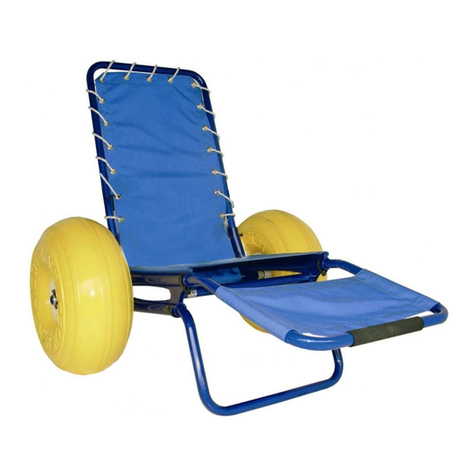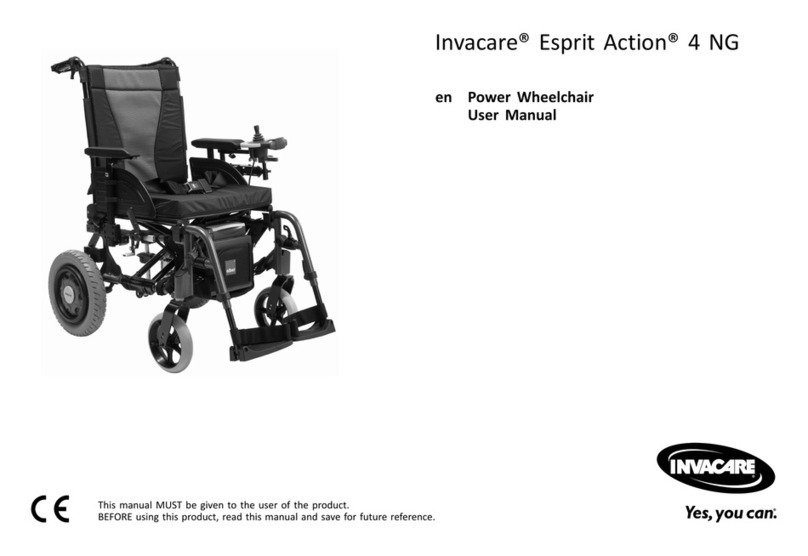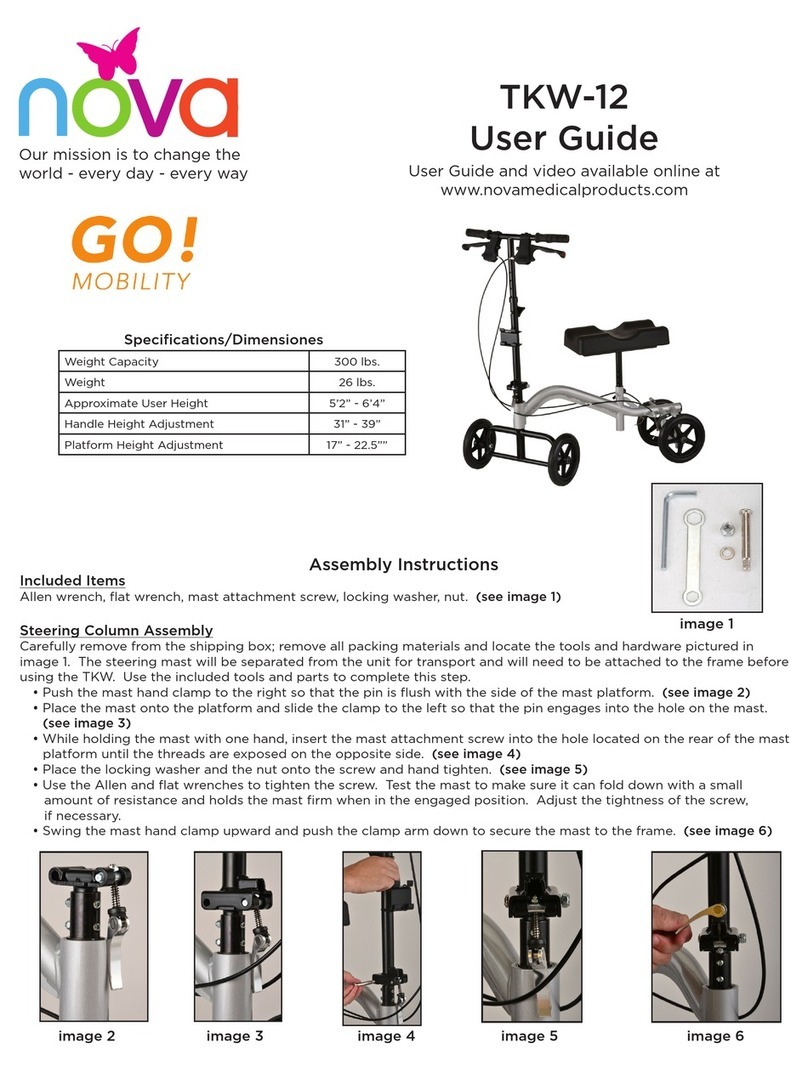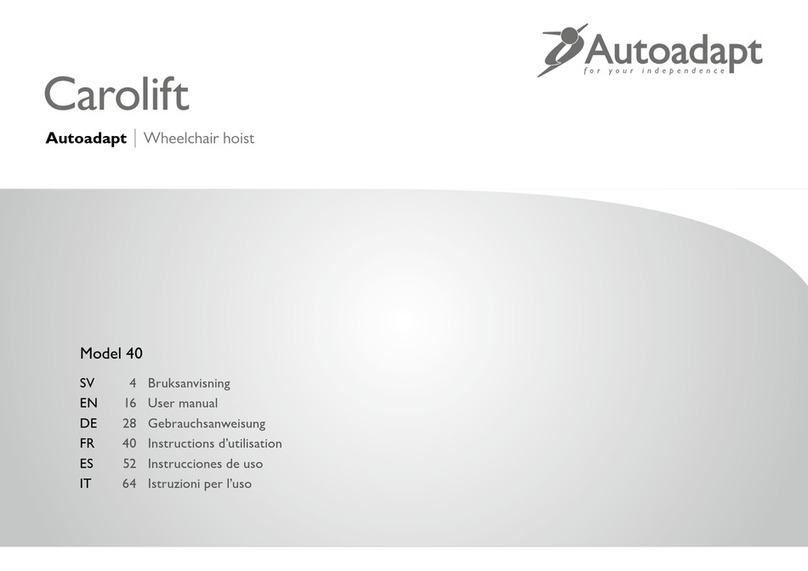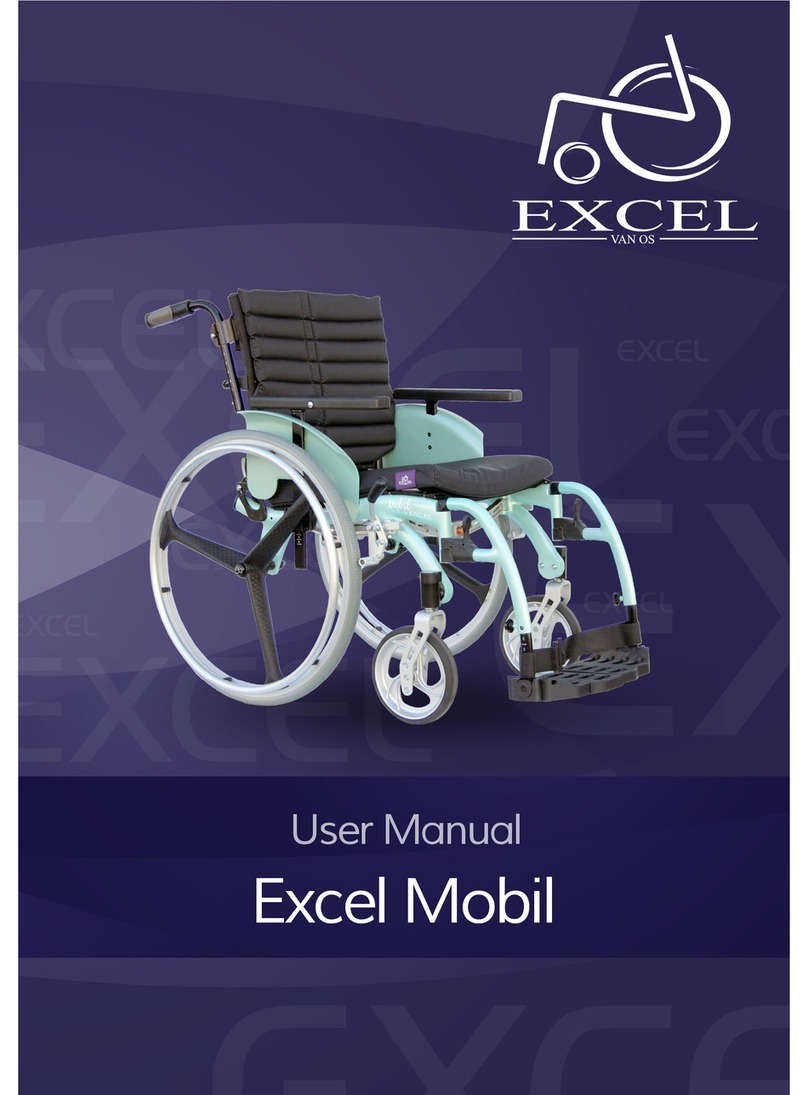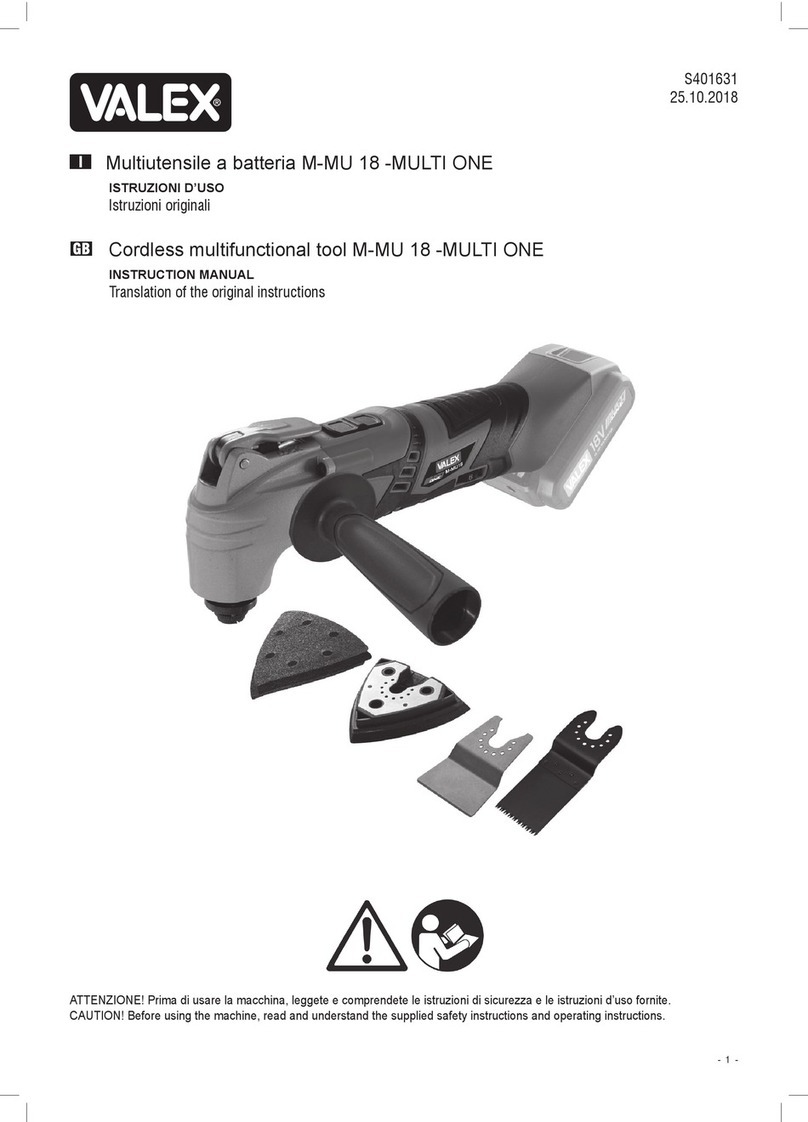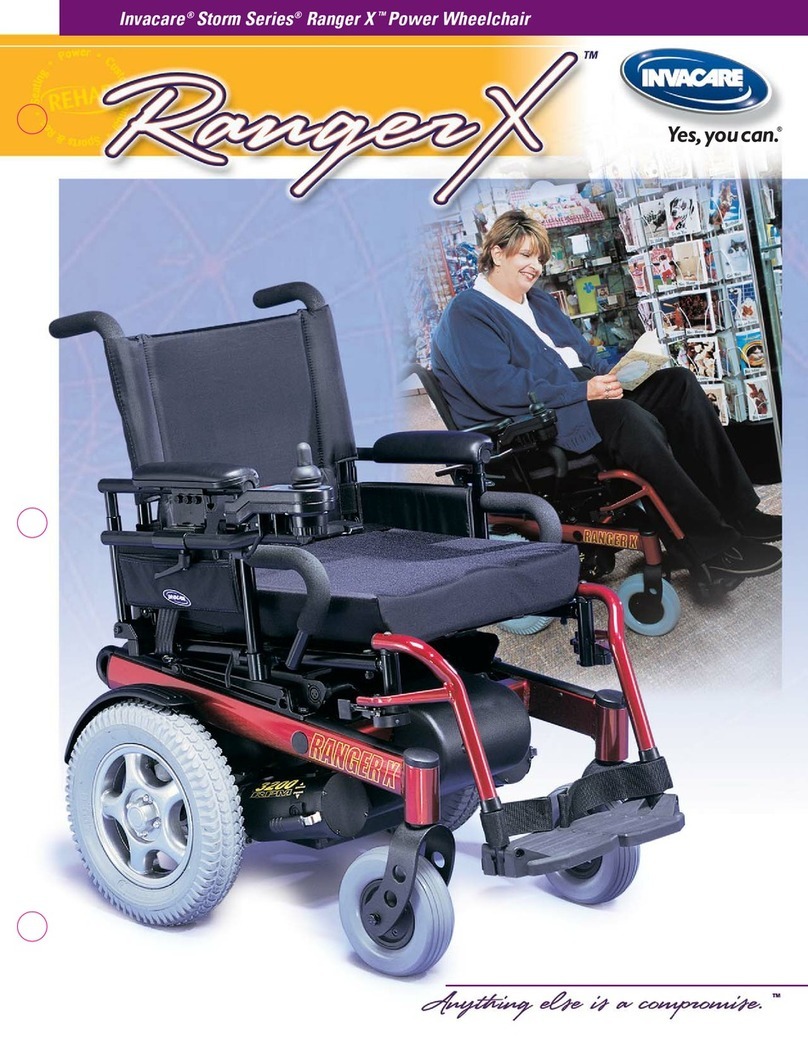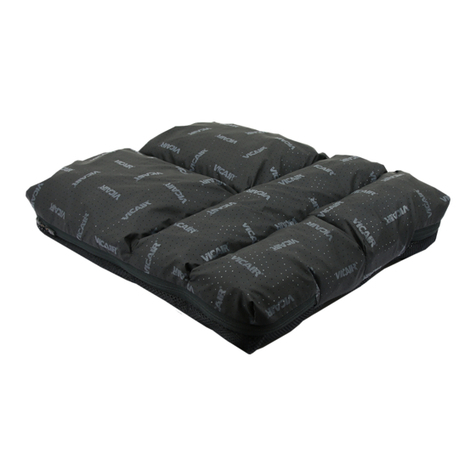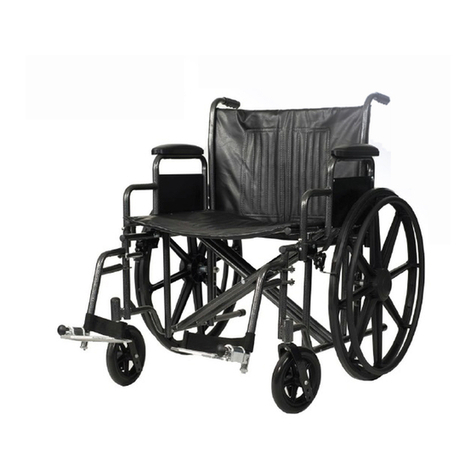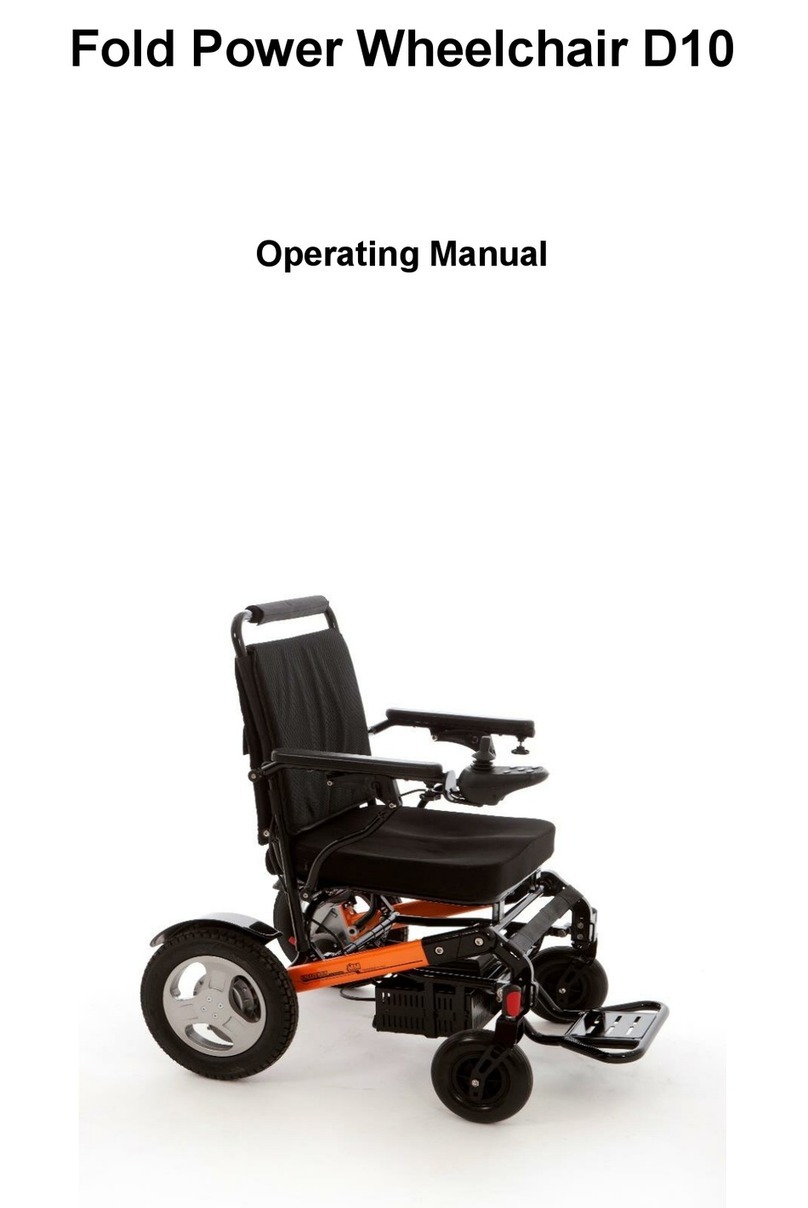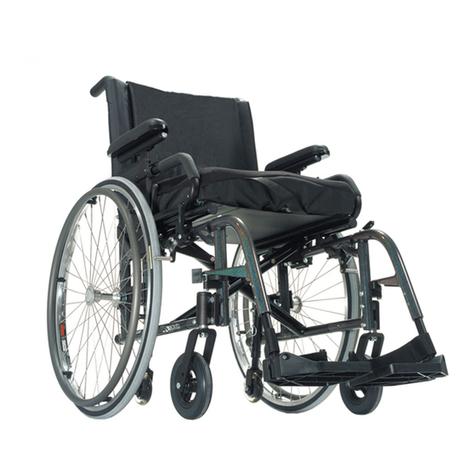
2. Safety Instructions
6
Avoid Riding in These Conditions Unless Accompanied by a
Caretaker
- Riding in inclement weather, such as a rainy day, heavy fog, strong
wind, snow, etc.
- If your wheelchair gets wet, electronic functions may cause damage
so please wipe all water off immediately.
- Riding in sub optimal conditions such as muddy areas, trails, sand,
gravel, etc.
- Riding on crowed roads.
- Riding on roads without a fence , or located near a ditch, pond, etc.
- If you must cross railroad tracks, turn off your wheelchair and
inspect the tracks to ensure that your tires will safely cross.
- The electric wheelchair is for personal use only, please do not carry
people or goods.
Precautions for Uphill and Downhill
- Avoid riding on steep hills, places with uneven roads, high steps,
channels and any other steep incline surfaces
- Avoid riding on steep slopes, the slope range should be less than 9
degrees.
- Please carefully operate the controller during any uphill use.
- Keep moving forward during uphill climbs, or downhill slopes and do
not stop.
- Use your brakes to reduce your speed during any downhill
movement.
- Avoid riding sideways on a steep incline.
- Riding on stairs is not recommended and please avoid crossing any
high steps.
- Avoid crossing wide ditches.
- During the crossing of a ditch, keep a 90° angle between the tires
and the ditch.
- Do not set the wheelchair to manual mode during any uphill and/or
downhill move.
- If the wheelchair is malfunctioning at a traffic crossing, please
immediately ask a passerby for help. Also, set the wheelchair to
manual mode and push the wheelchair to leave the scene.












